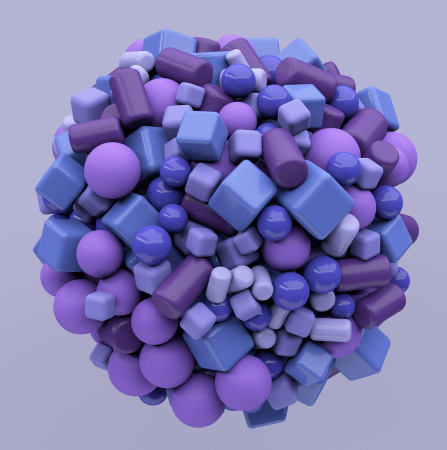The product requirements document (PRD) is a ‘recipe’ for making a successful product. And a successful product is easy to maintain, develop, and change. It does not diminish when you have minor changes in your development team, and it brings profit in any form. You want your project to be complete and successful, for sure. Therefore, let’s write a good recipe for its preparation (development).
What is Product Requirements Document (PRD)?
PRD is a description of the requirements for a particular product or service. It reflects how the product will look and work. You present your requirements either in a single document or a set of documents, or a set of artifacts (layouts, diagrams, diagrams, documents).
The requirements in this document reflect your vision and expectations for the product. A product requirements document is necessary for both parties — you and the contractor you choose. Technical specification will help the customer clearly define the project’s goals and objectives. Think about the strategy, and decide what they expect from the performer. The contractor needs the PRD document as the source information for the project.
PRD as a Part of Discovery Phase of Software Development
The discovery phase of a project is the first and mandatory development stage, where you should:
- identify the requirements
- analyze business goals
- propose a technical implementation
- fix the project boundaries
- estimate the development cost
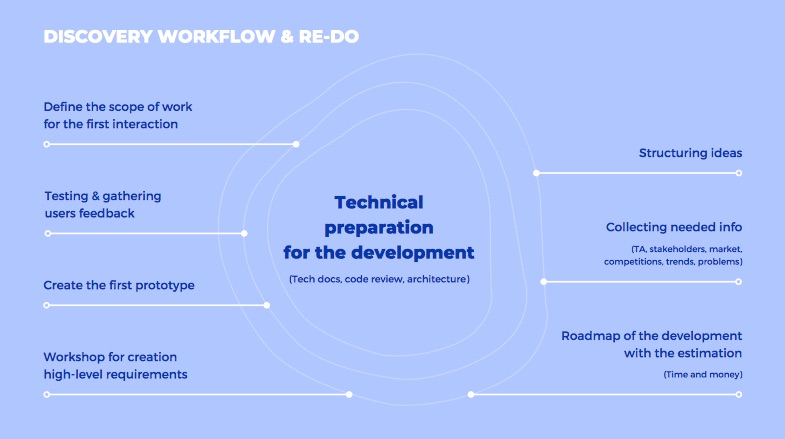
To make sure the expectations will coincide with the result, that is the stage when a PRD is being created. After getting acquainted with the project through the PRD document, you can conclude the actual amount of work, cost, and deadlines. Besides, the PRD is used to prepare for work on the project or during its release. The final result often depends on the completeness of the customer’s information and the elaboration of details.
Essential Components of a PRD
A PRD template is an excellent solution to make it comprehensible for everyone involved in product development. We here at Fulcrum Rocks use this PRD template:
 PRD Template
PRD Template
Below you can see the key components of the correct product requirements documents.
1. Product vision
This section should clearly describe the purpose of the product or project. It includes initiatives, goals, and vision. You can answer the following questions to make sure the section is complete and informative:
- What business goals should the product serve?
- What tasks should the product solve?
- Who will use the product, and in what situations?
- What are the competitors of the business and the product?
2. Product scope
You need to decide on the time, and this information should be noted in this section. It is not just the product development time that matters. Decide on the amount of time to interact with the specialists involved. The total time frame may not coincide with the product launch date. Allow additional time for testing and making final adjustments. The PRD document’s release part allows us to focus on the milestones and dependencies to keep everyone on track.
3. Functional requirements
This stage is essential to write down all the product features that you expect to see in the release. The product requirements should be clearly specified for each feature.
Make sure the section covers the following issues:
- Name of the feature
- Feature description
- Purpose of the feature
- User problem & value
- Tech assumptions
- Acceptance criteria
- Priority
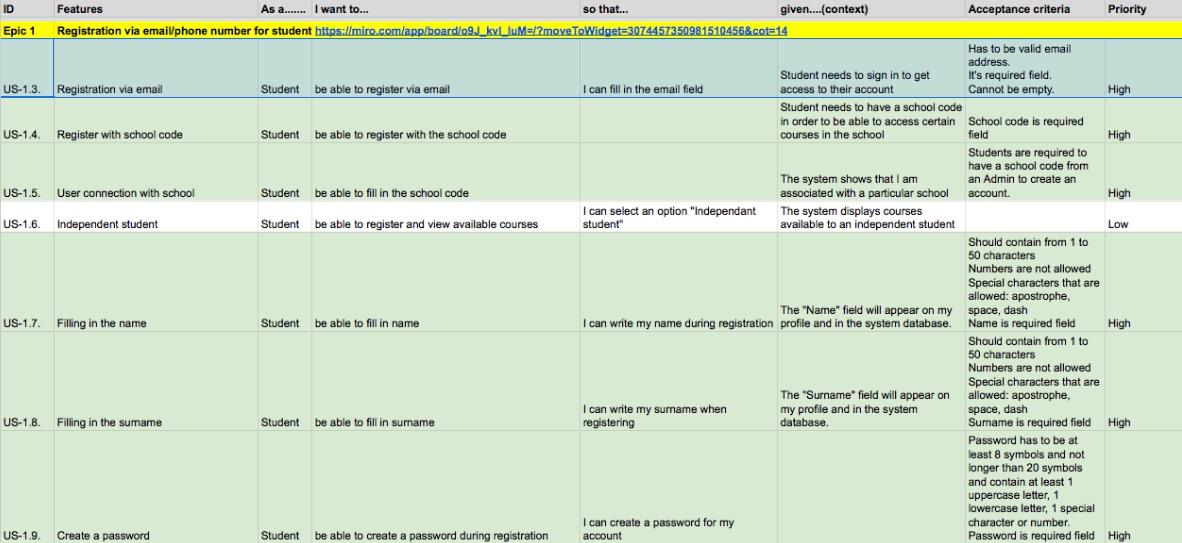 List of Functional requirements — Smile Africa — MVP
List of Functional requirements — Smile Africa — MVP
4. Non-functional requirements
When you confirm the product design in the PRD, you will see what your product will look like. The more detailed the technical task for the design is, the more predictable the result will be. This is when you are thinking from the user’s perspective and provide mockups to understand better how the feature will work.
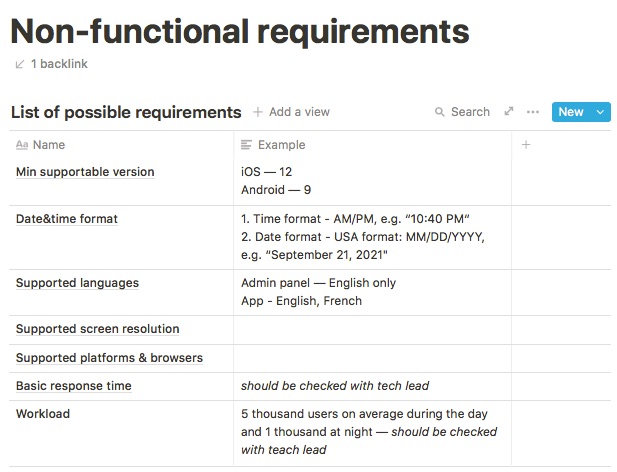
5. Technical architecture
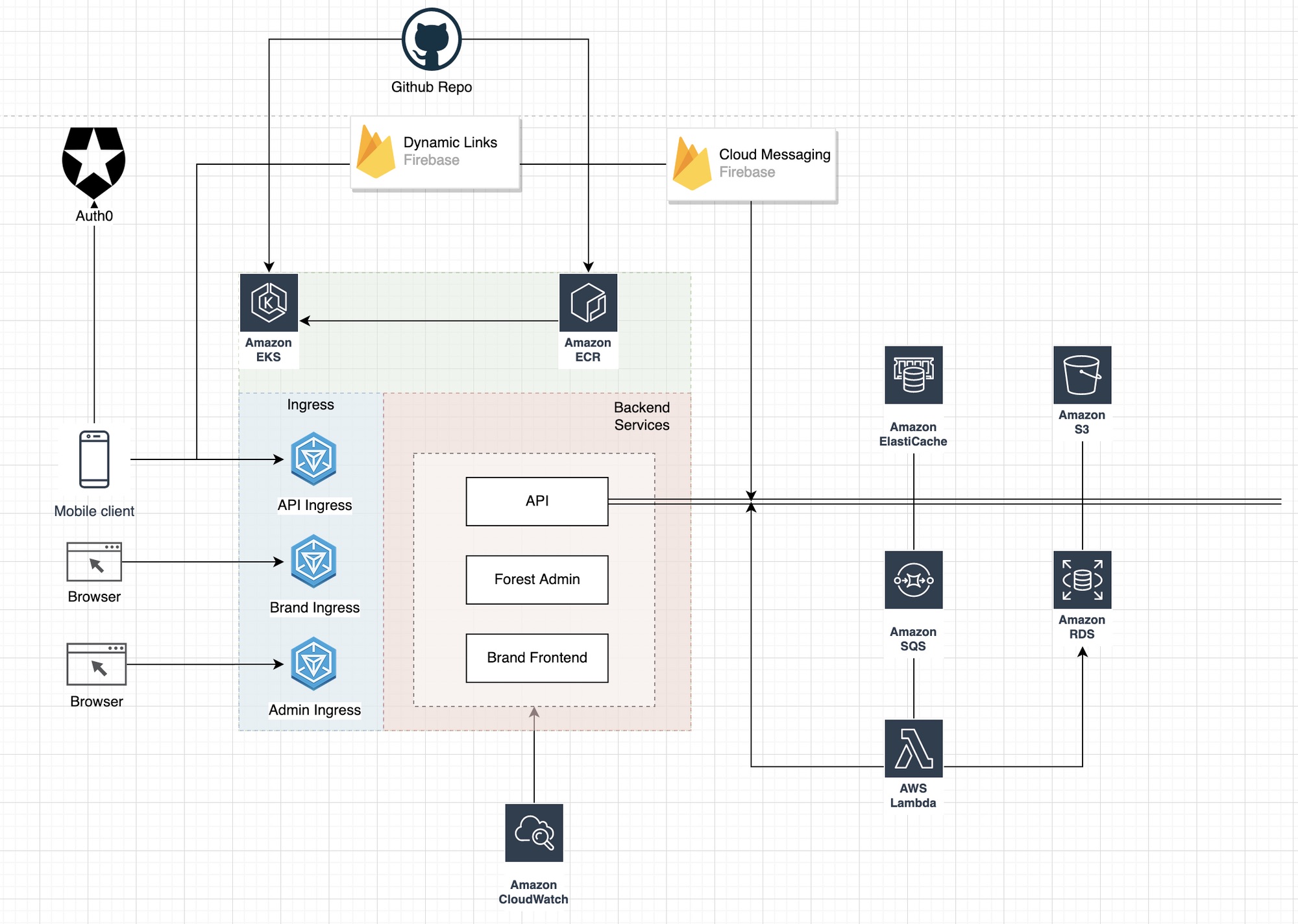
6. Risks
How t0 identify risks? The idea is to find as much as possible “What if” cases.
To identify risks talk to different people — from management, tech, finance, etc.
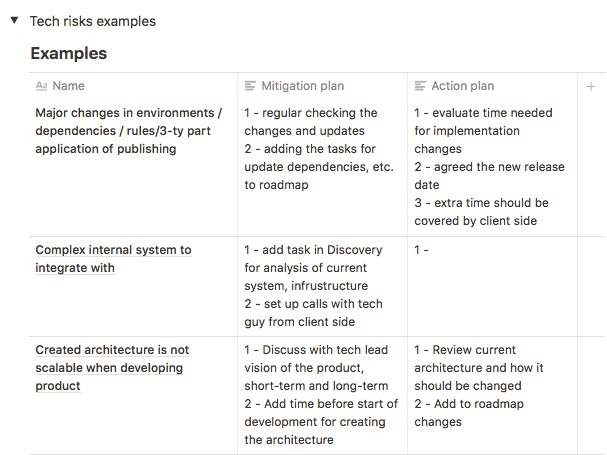
7. Analytics
Think over how you will measure the success and failures of your features. Also, it is desirable to mention the customer’s interaction with the product and its features.
8. Future plans
Cross-team collaboration is critical when creating successful projects. It is recommended to outline any questions or issues that may arise over time. Specify any valuable information to help the team understand how the product may evolve in the future.
How to Write an Effective Product Requirements Document?
Since product requirements are not necessary for the sake of the requirements themselves, they should be:
- Clear. Formulate your requirements in simple language so that the person who will work with them does not have to solve riddles.
- Readable. Think about who will work with your document (in whatever form you provide it). Would you be happy if you received a diagram on a sheet of a notepad or a document with 150 pages of straight text?
- Complete, but not overflowing with unnecessary information. A PRD is not always a large document, but if you have one, make sure it is easy to read and understand.
- Reasonable. Remember that you work together with the development team and do not check their ability to cope with difficulties. Setting unrealistic tasks threaten the success and compliance with project deadlines.
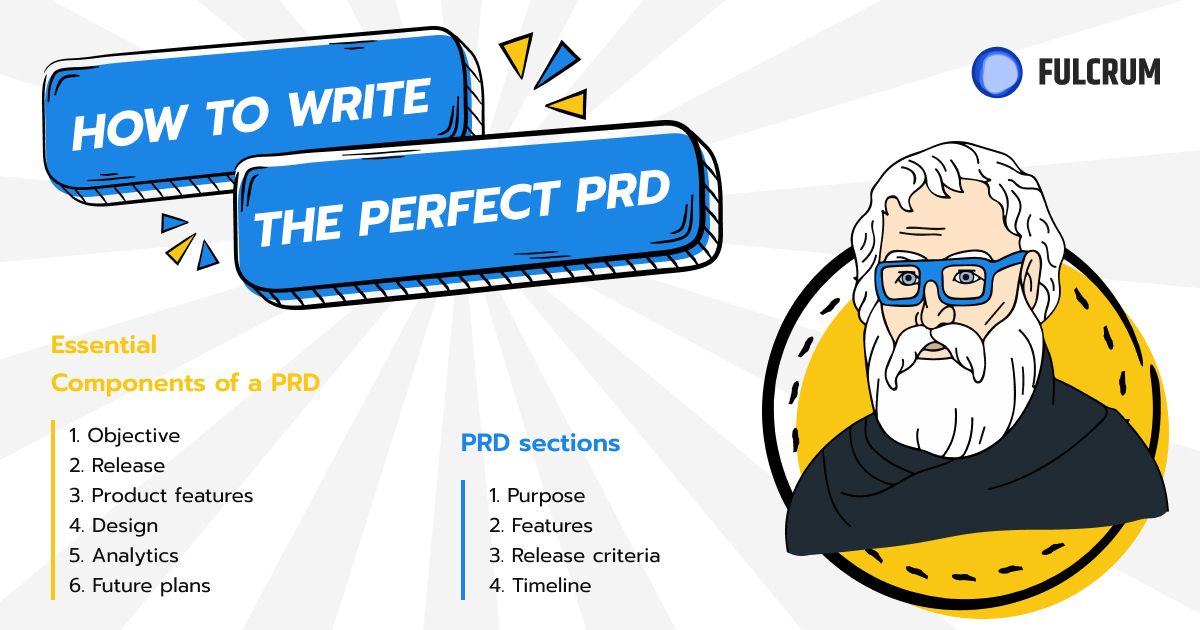
And a few more tips to follow:
- Describe each requirement separately, or divide them into logical groups. You do not need to collect all the requirements in one section. If they are related, group them, for example, according to their functionality. This division will help you set priorities correctly.
- Follow the sequence. The document should have a simple structure so that it is easy to read. If the product is divided into modules, you should arrange such modules in a logical sequence.
- Give clear instructions. Try to avoid such phrases as “if necessary,” “if possible.”
- Avoid any ambiguities: try to avoid the words “approximately,” “and so on.” Any definitions used must have an unambiguous meaning. For example, the term “convenient” can mean different things to different people.
- Think about what exactly needs to be done rather than how it should be done.
- Keep all requirements in one place. You can use any tool for your PRD, and all project participants should know where to find it.
You may endlessly describe what to do and how to do it. Of course, it would be great to find one universal PRD template that would be used regardless of the project’s nature and conditions. As you can see, that’s tricky given that software products development roadmap may differ significantly, due to a wide range of product features. Thus, the PRD template will differ in different projects and depends on the approach to project implementation.
Fulcrum Rocks experience
Kör Case Study
Kör is an online platform in Norway that allows booking driving programs & lessons online. It keeps track of user’s private practice driving and lets family & friends be involved in the process. As a number of other projects for our clients, Kör went through the Discovery phase with Fulcrum and got a detailed PRD.
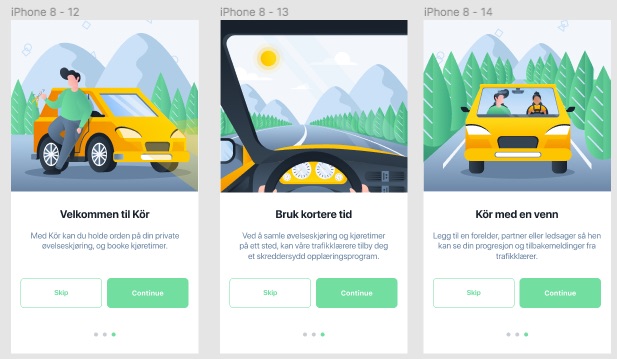
BUFF Case Study
Buff is a popular loyalty program for gamers. It rewards gamers just for playing. Right now the platform has 200K users worldwide.
BUFF mobile app PRD included all the critical components listed above. The main challenge was to solve was the integration with the games we support. On the PC app, the service is provided by Overwolf. On mobile, we needed to come with our tracking solution.
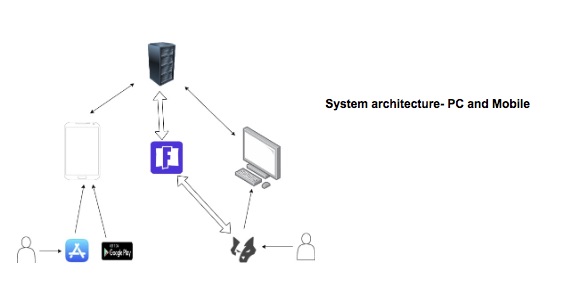 System architecture PC and Mobile
System architecture PC and Mobile
We developed BUFF as a bundle of separate React applications which work in synergy with each other communicating via EventBus pattern.
Final Thoughts
A competent and complete PRD is the first step to a successful project. If you want your project to be completed on time, do not omit the stage of preparing the product requirements document.

Product Requirements Document FAQ
-
What is PRD?A PRD is a document agreed by the customer and the contractor that thoroughly describes all the future project requirements.
-
What does PRD stand for?PRD stands for Product Requirements Document.
-
Why do you need a product requirements document?The product requirements help you allocate time and effort wisely and eliminate most risks. All project participants must have an identical idea and clearly understand what the finished product should be. All the information is recorded in writing or graphically. This process eliminates the risk of confusion and misunderstandings.
-
What is the difference between MRD and PRD?You should not interchange the terms MRD and PRD. PRD stands for product requirements document that outlines product capabilities, functionality, and features. On the other hand, an MRD is a market requirements document that identifies a market need and is based on customers.


